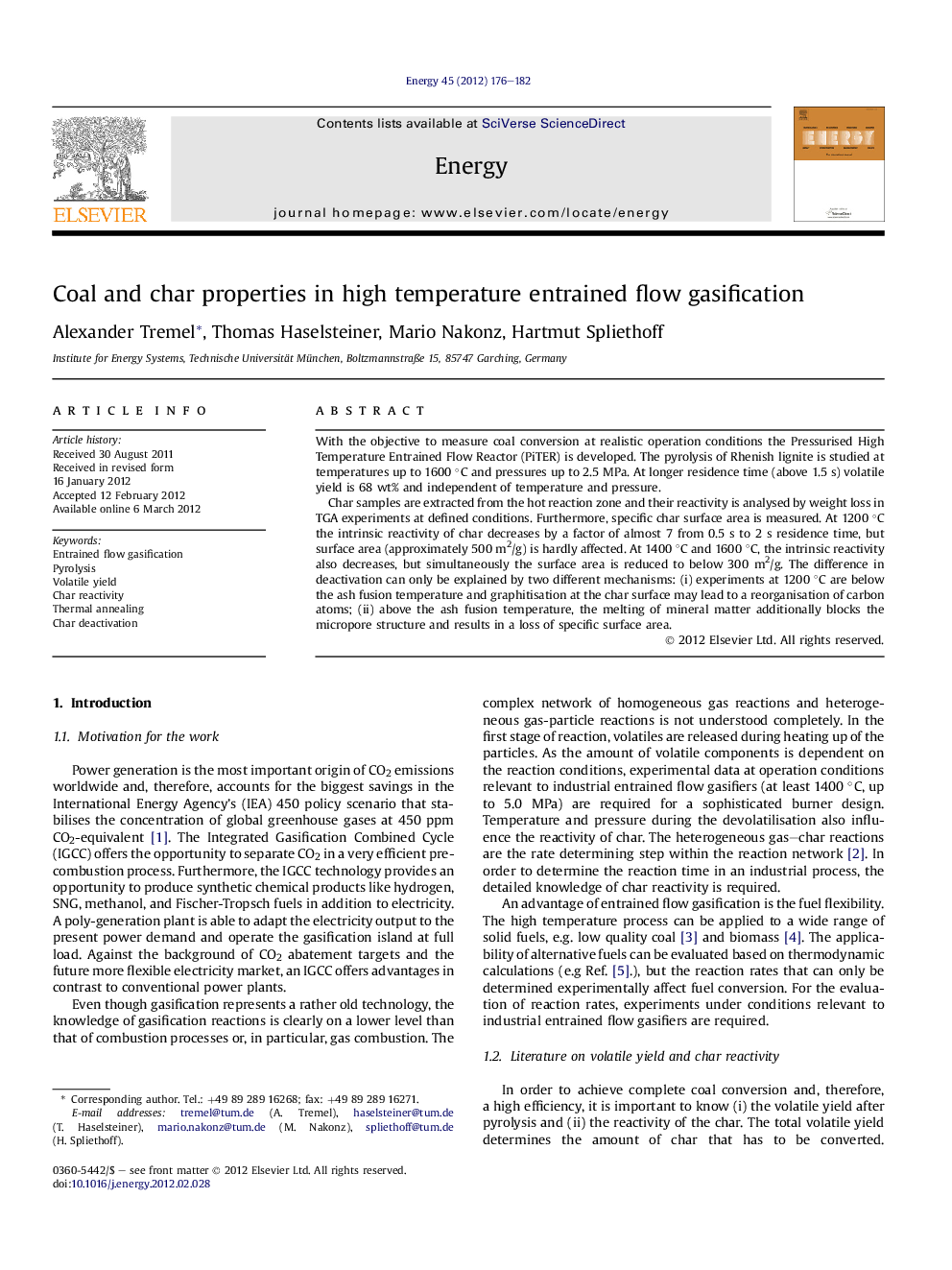| Article ID | Journal | Published Year | Pages | File Type |
|---|---|---|---|---|
| 1733660 | Energy | 2012 | 7 Pages |
With the objective to measure coal conversion at realistic operation conditions the Pressurised High Temperature Entrained Flow Reactor (PiTER) is developed. The pyrolysis of Rhenish lignite is studied at temperatures up to 1600 °C and pressures up to 2.5 MPa. At longer residence time (above 1.5 s) volatile yield is 68 wt% and independent of temperature and pressure.Char samples are extracted from the hot reaction zone and their reactivity is analysed by weight loss in TGA experiments at defined conditions. Furthermore, specific char surface area is measured. At 1200 °C the intrinsic reactivity of char decreases by a factor of almost 7 from 0.5 s to 2 s residence time, but surface area (approximately 500 m2/g) is hardly affected. At 1400 °C and 1600 °C, the intrinsic reactivity also decreases, but simultaneously the surface area is reduced to below 300 m2/g. The difference in deactivation can only be explained by two different mechanisms: (i) experiments at 1200 °C are below the ash fusion temperature and graphitisation at the char surface may lead to a reorganisation of carbon atoms; (ii) above the ash fusion temperature, the melting of mineral matter additionally blocks the micropore structure and results in a loss of specific surface area.
► Development of a novel pilot scale entrained flow research reactor. ► Pyrolysis at up to 1600 °C and up to 2.5 MPa under entrained flow conditions. ► Surface area of char significantly decreases above the ash melting temperature. ► Intrinsic reactivity of char is dependent on heat treatment severity. ► Thermal annealing affects char reactivity, even at short residence time.
